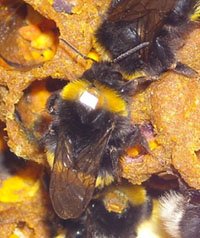How can we apply computers, cameras and the internet to effectively guard biodiversity? This question is one of the topics during the workshop ‘Distributed Sensing and Collective Intelligence in Biodiversity Monitoring' organized by the Centrum Wiskunde & Informatica (CWI) in Amsterdam from 3 till 6 December 2008. Experts from all over the world will gather to discuss new opportunities offered by sensors, internet and the efforts of volunteers.
Whale shark
Knowledge of migration, procreation and food patterns is a prerequisite to protect biodiversity. One of the speakers, marine biologist Brad Norman (Ecocean, Australia), set up a website where amateur divers from all over the world can upload pictures of the rare whale shark. The lines and spots on the skin of this huge animal are as unique as a human fingerprint. Through a large database of pictures the computer can trace the individual. Combined with data like location (GPS) and time, an observation can be added to the ever growing database. E-mails report volunteers about the animal's fortunes.

More information and registration: see the workshop website.
Picture 1: Whale shark, source Ecocean, http:whaleshark.org
Picture 2: Bumblebee with RFID tag, source Nigel Raine, Queen Mary University of London.
